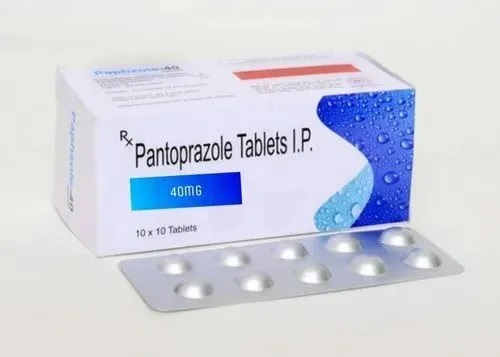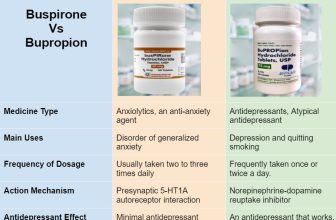Why Take Pantoprazole First Thing in The Morning – The Morning Ritual

In the realm of modern medicine, Pantoprazole also known as Pantonix has emerged as a defender against the discomfort and damage caused by acid-related conditions. So, why take Pantoprazole first thing in the morning?
Pantoprazole, one of the proton pump inhibitors that is most frequently prescribed, is now well-known to people who are looking for help from these digestive disorders. Taking Pantoprazole first thing in the morning is recommended because it suppresses stomach acid production. That is usually at its highest during the early hours. By inhibiting acid production at this time, the medication can be more effective in managing conditions like acid reflux and ulcers throughout the day. It provides relief from symptoms and promotes healing.
We will explore the science, practical considerations, and benefits of this medicine. So, join us on this informative journey as we unravel the significance of this daily ritual and its impact on your health.

Common Conditions Treated with Pantoprazole
Now the question is what is pantoprazole used for? Pantoprazole is prescribed to manage several acid related conditions like
- Gastroesophageal Reflux Disease (GERD)
- Peptic Ulcers,
- Zollinger Ellison Syndrome,
- Erosive Esophagitis,
- Helicobacter pylori Eradication.
Understanding the use and benefits of Pantoprazole in managing these acid related conditions is essential for patients. Also for the doctors to ensure the most effective outcomes.
What Is The Best Time to Take Pantoprazole 40 mg?

The best time of day to take Pantoprazole 40 mg which is named as Protonix is basically in the morning. But Is it better to take pantoprazole in the morning or at night? If you want to know the “better” result you can take at least 30 minutes before your first meal of the day. The benefits of taking medicine in the morning are countless. This timing is recommended for the following reasons,
Increase effectiveness
Stomach acid production tends to be highest in response to meals during the day. Taking Pantonix in the morning aligns the medication’s maximum effectiveness with the body’s peak acid production, helping control symptoms.
Reduce the risk of nighttime acid breakthrough
By taking Pantonix or Pantoprazole in the morning, you can reduce the risk of nighttime acid breakthrough. It’s a phenomenon where acid reflux symptoms worsen during the night, disrupting sleep. Pantoprazole is most effective when taken on an empty stomach.
Ensures efficient absorption without interference
Taking it in the morning, before eating, ensures efficient absorption without interference from a recent meal. A morning routine of taking Pantoprazole establishes a consistent pattern of acid suppression throughout the day, which is crucial for managing acid related conditions.
Enhancing Symptom Control and Quality of Life
Consistently taking Pantoprazole in the morning leads to improved symptom control and an enhanced quality of life for people dealing with acid related conditions. By effectively managing the production of stomach acid throughout the day, you can experience fewer symptoms like heartburn, regurgitation, chest pain, and the irritation of the esophagus.
This reduction in symptoms not only improves comfort but also helps prevent complications connected with long term exposure to stomach acid, such as esophageal damage and the development of peptic ulcers.
How Much Pantoprazole Can You Take in A Day?
The typical dosage of Pantoprazole for adults varies depending on the medical condition being treated. The following are common dosages:
|
Issues |
Dosage |
| Gastroesophageal Reflux Disease | The usual adult dosage is 40 mg. It is taken once daily in the morning, with or without food. Treatment lasts 4 to 8 weeks, and in some cases, a doctor recommends maintenance therapy with a lower dose. |
| Peptic Ulcers | For the treatment of peptic ulcers, the adult dosage is 40 mg. Taken once daily in the morning. The duration of treatment can vary but is often around 4 to 8 weeks. |
| Erosive Esophagitis | To heal erosive esophagitis, the adult dosage is 40 mg taken once daily in the morning for 8 weeks. For long term maintenance, a lower dose is used. |
How Long Should I Take Pantoprazole 40 mg?
The duration of Pantoprazole 40 mg treatment is determined by your doctor based on your specific medical condition and needs. The recommended treatment duration varies according to the condition.
In many cases, Pantonix is prescribed as a short term treatment to alleviate acute symptoms or to heal certain conditions. For example, treatment for GERD lasts for 4 to 8 weeks, while treatment for peptic ulcers takes the same as well.
For chronic conditions like GERD, where symptoms are ongoing, doctors recommend long term use of Pantoprazole.
Can I Take Pantoprazole Twice A Day
The use of Pantoprazole twice a day is possible, but it should only be done under the direct guidance and prescription of a doctor. The medicine is prescribed for once daily use, often in the morning before breakfast, as it can provide effective acid suppression for a full day. However, in certain medical situations, a doctor recommends a higher dosage or taking it in the morning and another dose in the evening.
Now, Can I take 40 mg twice a day? The decision to take Pantoprazole twice a day is based on the severity of your condition. Also the response to once daily dosing, and the specific recommendations of your doctor. It’s crucial to consult your doctor before increasing the dosage or frequency. If you are adjusting the dosage or frequency of the med without medical supervision, it causes side effects or interactions with other medications you are taking.
How to Take Pantoprazole in The Morning?
After knowing the answer of the question, Can I take pantoprazole first thing in the morning, it’s necessary to know how to consume the medications. For your convenience we are sharing the Dosage and Administration Instructions. Take a look below,
Follow Your doctor’s Guidance
The first step in taking Pantoprazole in the morning is to strictly adhere to the dosage and administration instructions provided by your doctor. Pantoprazole is available in different forms, including tablets and capsules, and the prescribed dosage can vary based on your specific condition and its severity.
Take on an Empty Stomach
To maximize its effectiveness, Pantoprazole should be taken at least 30 minutes before a meal, typically in the morning before breakfast. This ensures that the medication has time to be absorbed into your bloodstream and reach its target in the stomach lining before you consume any food.
Swallow Whole
Pantoprazole tablets or capsules should be swallowed whole with a glass of water. Do not crush, chew, or break them, as this affects the medication’s release and effectiveness.
Consistency in Timing
Try to take Pantoprazole at the same time every morning to establish a routine. This helps ensure that you receive a consistent level of acid suppression throughout the day, promoting effective symptom control.
Duration of Treatment
The duration of Pantoprazole treatment varies based on your medical condition. Some people require short term treatment to address acute issues. On the other hand some others need long term therapy to manage chronic conditions like GERD.
Interactions with Food And Other Medications
Some specific This approach will help ensure that you receive the full benefit of the medication in managing your acid related condition. Therefore, keep in mind the below facts,
Food Interactions
As mentioned earlier, Pantoprazole is most effective when taken on an empty stomach. Take it at least 30 minutes before eating. Food affects the absorption of the medication. So it’s crucial to avoid taking it with or immediately after a meal.
Interactions with Other Medications
It’s important to inform your doctor about all the medications you are taking, including over the counter drugs and supplements. Pantoprazo interacts with certain medications, affecting their absorption or effectiveness. Your doctor can provide guidance on spacing out the timing of Pantoprazole and any other medications you are using to avoid interactions.
The Importance of Consistency
Consistency in taking Pantoprazole in the morning is paramount for achieving optimal results. Here’s why consistency matters:
Maintaining Steady Acid Suppression: By taking the med at the same time each morning, you ensure a consistent level of acid suppression throughout the day, which is essential for managing acid related conditions effectively.
Symptom Control: Regular and consistent use of the medication is more likely to lead to improved symptom control. It minimizes fluctuations in acid production, reducing the risk of breakthrough symptoms.
Preventing Complications: For chronic conditions like GERD, long term, consistent use of Pantonix prevents complications such as esophageal damage and the development of peptic ulcers.
Treatment Success: In many cases, the success of the treatment is closely tied to patient adherence and consistency. Skipping doses or taking them haphazardly can compromise the effectiveness of Pantoprazole.
The Role of Lifestyle and Dietary Factors
While you are on pantoprazole you have to make some changes in your lifestyle, dietary facts and holistic approach. Certainly, here’s a tabular representation of the role of lifestyle and dietary factors when taking Pantoprazole for managing acid related conditions:
| Factor | Description |
|---|---|
| Dietary Habits | Avoid spicy and acidic foods that can stimulate excess acid production. |
| Limit or eliminate items like citrus fruits, tomatoes, and hot spices. | |
| Reduce the consumption of fatty and fried foods that can relax the lower esophageal sphincter. | |
| Minimize caffeine and carbonated beverage intake, as they can relax the lower esophageal sphincter. | |
| Limit or avoid alcohol consumption, as it can irritate the esophagus and increase acid production. | |
| Opt for smaller, more frequent meals instead of large ones. | |
| Finish eating a few hours before bedtime to prevent nighttime acid reflux. | |
| Lifestyle Changes | Manage weight through diet and exercise to reduce the risk of acid reflux. |
| Elevate the head of the bed to prevent nighttime reflux. | |
| Avoid wearing tight clothing, which can increase abdominal pressure. | |
| Practice stress reduction techniques like deep breathing, yoga, or meditation. | |
| Quit smoking, as it weakens the lower esophageal sphincter and increases acid production. | |
| Holistic Approach | Specific treatment based on specific needs and tastes of every person. |
| Regular follow up with doctors for ongoing evaluation and treatment adjustments. | |
| Patient education about the condition, treatment options, and lifestyle choices. | |
| Comprehensive care addressing both physical and emotional aspects of living with an acid related condition. | |
| Implementation of preventive measures to reduce the risk of complications and maintain a good quality of life. |
How Long Should I Take Pantoprazole 40 mg?
The duration of Pantoprazole 40 mg treatment depends on your specific medical condition. It prescribes for 4-8 weeks for conditions like GERD or peptic ulcers. The recommended duration is determined by your doctor. It’s crucial to follow their guidance. Do not discontinue the medication without consulting them, as abrupt cessation leads to symptom recurrence. If you have concerns about the length of your treatment, discuss them with your doctor for personalized advice.
Pantoprazole Dosage Before or After Food
You think about taking pantoprazole with or without food. For best results in lowering stomach acid, it should be taken with nothing, roughly half an hour before your first meal of the day. It is usually not advised to take it right after eating. Do not take it in the evening after supper is not when it works best.
Pantoprazole Common Side Effects
Everyone will experience pantoprazole side effects. Many people tolerate the med well. Additionally, some less common but serious side effects occur, so it’s important to be aware of any unusual symptoms and seek medical attention if needed. However the side effects include:
- Mild to moderate headaches.
- Occasional feelings of nausea.
- Mild abdominal pain or discomfort.
- Changes in bowel habits, which can include diarrhea or constipation.
- Increased gas or bloating.
- Some people experience dizziness while taking Pantoprazole.
It’s important to note that if any side effects persist or become severe, consult your doctor for guidance. pantoprazole side effects long term
Pantoprazole Side Effects Long-term
Long term use of Pantoprazole and other proton pump inhibitors (PPIs) is generally safe. It is also effective for managing acid related conditions. However, like any medication, there are side effects and considerations to be aware of when using Pantoprazole over an extended period. Some of the side effects and considerations connected with long term Pantoprazole use include:
Nutritional Deficiencies: Long time use of PPIs like Pantoprazole affect the absorption of calcium, magnesium, and vitamin B12. This increases the deficiencies of these essential nutrients.
Osteoporosis and Bone Fractures: Long term PPI use is connected with an increased risk of osteoporosis and bone fractures. Especially in older and adults.
Kidney Disease: Long term PPI use may be connected with a higher risk of kidney disease, according to certain studies. Further research is necessary to establish causation because this connection is not fully understood.
Rebound Acid Hypersecretion: Discontinuing PPIs after long term use, some people experience an increase in stomach acid production. It is known as rebound acid hypersecretion. This leads to a temporary worsening of acid related symptoms.
Infections: PPIs increase the risk of certain infections. Particularly gastrointestinal infections like Clostridium difficile. PPI use is connected with an increased risk of bacterial gastroenteritis. It is caused by Salmonella and Campylobacter. However, the benefits and risks of PPI use should be carefully balanced. Also, monitoring of adverse events during PPI therapy should be enhanced.
Cardiovascular Concerns: There is a connection between PPI use and an increased risk of cardiovascular issues like heart attacks. Long-term use of PPIs cause hypomagnesemia. It leads to cardiovascular disease. Patients with type 2 diabetes PPI use was significantly connected with higher risks of coronary artery disease, myocardial infarction, heart failure, and all-cause mortality.
Safety Precautions When Taking the Medication
Before taking the medicine you must concern about the facts that includes
Allergies: Before starting Pantoprazole, inform your doctor of any known allergies to this medication or other proton pump inhibitors (PPIs).
Medical History: Provide your doctor medical history. Which includes any existing medical conditions like liver disease or osteoporosis.
Pregnancy and Breastfeeding: If you are pregnant, planning to become pregnant, or breastfeeding, consult your doctor before taking Pantoprazole.
Interaction with Other Medications: Pantoprazole interacts with other medications. It affects their absorption or effectiveness.
Bone Health: Long time use of PPIs like Pantonix can be connected with a slightly increased risk of bone fractures and osteoporosis.
measures to complement your Pantoprazole therapy and improve your overall health.
Frequently Asked Questions (FAQs)
What happens if I eat right after taking pantoprazole?
Taking pantoprazole with food delays its absorption by around 3 to 4 hours. It increases its variability. Eating right after taking pantoprazole may not have any significant effect on the medication’s effectiveness. It is important to note that the benefits and risks of pantoprazole use should be carefully balanced, and monitoring of adverse events during pantoprazole therapy should be enhanced.
How long before breakfast should I take pantoprazole?
To ensure pantoprazole effectively suppresses stomach acid before your morning meal, it’s recommended to take twice a day. Take it about 30-60 minutes before breakfast and another 1 hour before dinner. This timing optimizes its efficacy. Swallow the tablet whole with water, and do not crush, chew, or break the tablet before swallowing
Does it matter what time of day you take pantoprazole?
Yes, the timing of pantoprazole can significantly impact its effectiveness. It’s essential to follow your doctor’s guidance on when and how to take the medication consistently.
Can I Take Pantoprazole at Night
You can take Pantoprazole at night. But it’s recommended to take it in the morning on an empty stomach, about 30 minutes before your first meal. Within this time the medication with the body’s natural acid production, prevents nocturnal acid breakthrough. It also maximizes effectiveness. But the ideal time depends on your own requirements. Thus, for your specific condition, it’s best to take your doctor’s advice.
Does pantoprazole work right away
Pantoprazole typically does not provide immediate relief of symptoms. It is not a fast acting medication. Pantoprazole works by reducing the production of stomach acid over time, which can take several days to achieve its full effect.
Conclusion
In conclusion, taking Pantoprazole first thing in the morning is a choice that is connected with the body’s natural rhythms of acid production. Moreover, an improvement in symptom control and reduced discomfort can positively impact overall quality of life. It allows people to enjoy meals without the fear of painful reflux. Also people can sleep more peacefully, and engage in daily activities with greater comfort and confidence. By doing so, one can enhance overall well being and quality of life.






